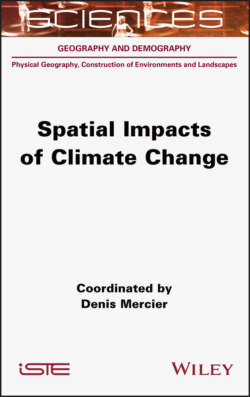Читать книгу Spatial Impacts of Climate Change - Denis Mercier - Страница 14
1.3. Future global climate change
ОглавлениеAt the current rate of atmospheric warming (0.2°C per decade), a warming of 1.5°C is expected by 2050 (IPCC 2014). Under the worst-case scenario and an increase of 8.5 watts per square meter, the temperature could rise by 4°C. The rise in sea level would be between 50 cm and 1 m by 2100 according to the latest IPCC report on cryosphere and oceans (IPCC 2019 and Chapters 2 and 3).
Figure 1.8. (a) Mean change in surface temperature. (b) Mean sea-level rise from 2006 to 2100 (as determined by multi-model simulations). For a color version of this figure, see www.iste.co.uk/mercier/climate.zip
COMMENT ON Figure 1.8.- All changes relate to 1986-2005. Time series of projections and a measure of uncertainty (shading) are presented for the RCP2.6 (blue) and RCP8.5 (red) scenarios4. The average and associated uncertainties averaged over 2081-2100 are given for all RCP scenarios as colored vertical bars on the right side of each panel. The number of models from Phase 5 of the Coupled Model Intercomparison Project (CMIP5) used to calculate the multi-model mean is given (source: IPCC 2014).
Figure 1.9. (a) Change in mean surface temperature. (b) Change in mean precipitation based on the multi-model mean projections for 2081-2100 compared to 1986-2005 in the RCP2.6 (left) and RCP8.5 (right) scenarios. For a color version of this figure, see www.iste.co.uk/mercier/climate.zip
COMMENT ON FIGURE 1.9.- The number of models used to calculate the multi-model average is shown in the upper right corner of each panel. The dotted lines show
regions where the projected change is large relative to the natural internal variability, and where at least 90% of the models agree on the sign of the change. Hatching shows regions where the projected change is less than one standard deviation of the natural internal variability (source: IPCC 2014).
Maps of climate change projected to the end of the 21st Century show that the continents and the Arctic basin are most affected by this warming under any scenario with an increase of 2.6 watts per square meter (RCP2.6), accentuated by an increase of 8.5 watts per square meter (RCP8.5). For the amount of average annual precipitation considered by 2100, the maps show that the cold regions of the Arctic and Antarctic should logically receive more water in relation to a higher moisture content of the air in these cold regions associated with the increase in the evaporation potential over the Arctic basin with less ice pack in summer.
On the other hand, regarding land masses, it is mainly the Mediterranean regions and certain regions of South America and South Africa that would experience a decrease in rainfall, which would have a significant impact on agricultural yields (see Chapter 10).
